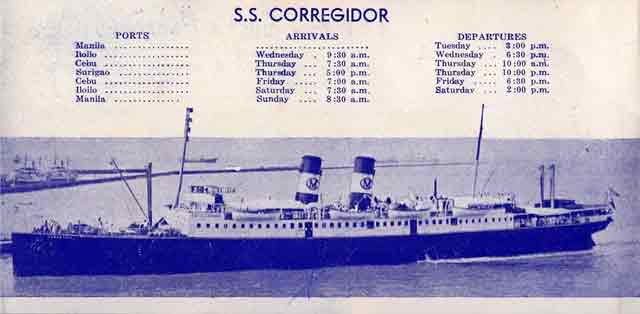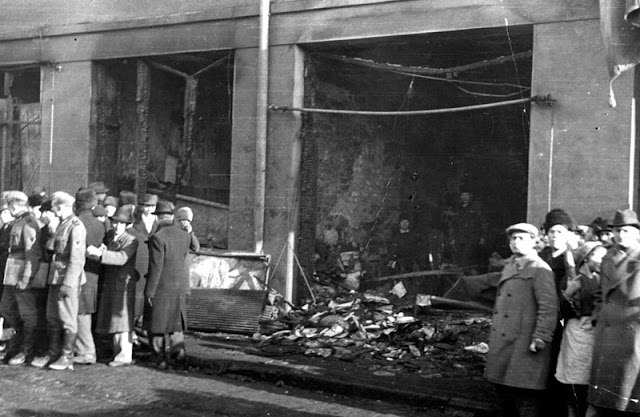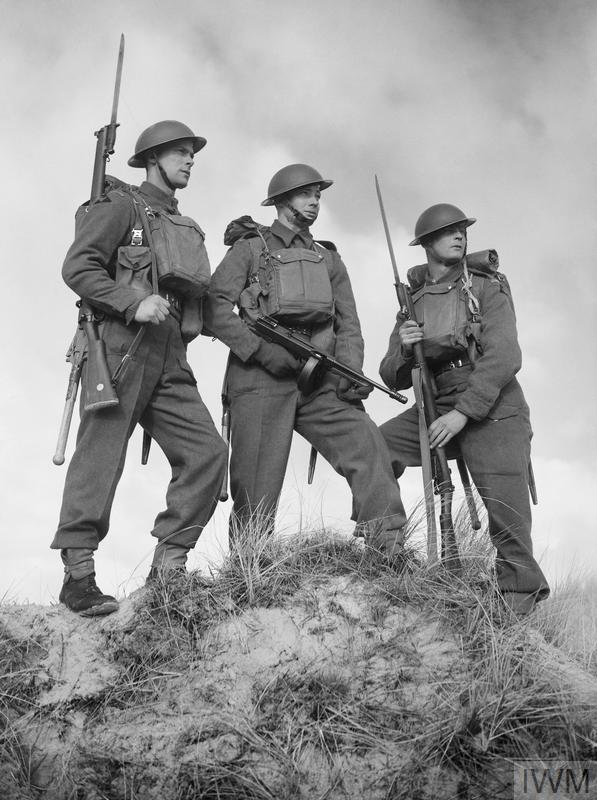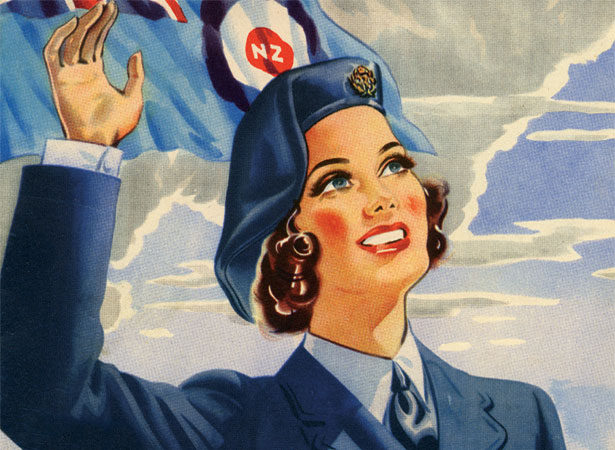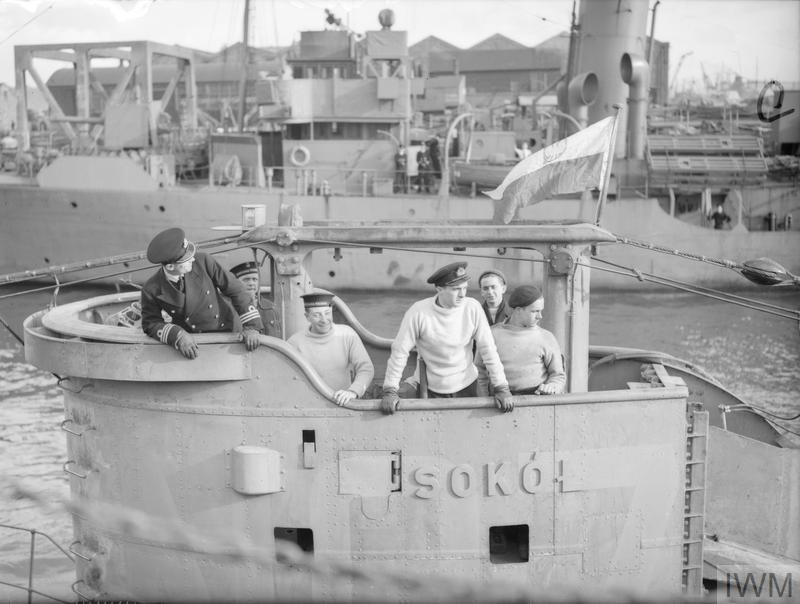Thursday 16 January 1941
 |
| The statue of Our Lady standing amidst the devastation at Senglea after the "Illustrious Blitz" Luftwaffe air raids on Malta, January 1941 (Times of Malta.com). |
Italian/Greek Campaign: By now, on
16 January 1941, the Italian Lupi di Toscana division has been wrecked in the Klisura Pass. It has "ceased to exist as an organized force." Out of the initial force of many thousands of combat troops, it now is down to 160 officers and men, with over 4,000 casualties and thousands of men captured. While this is an epic disaster, there is a silver lining for the Italians: the lost division has bought time for other Italian units to form a new defensive line in front of the strategic Klisura Pass. In fact, the Italians are organizing a counterattack, but that will take about 10 days to set in motion. This is a decisive moment in the war on the Albanian front because the Italians cannot afford to lose the key port of Valona, through which all of their supplies in the sector flow.
The British and Greeks wind up their consultations in Athens. Prime Minister Metaxas declines the offer of British ground assistance since he considers it too little to affect the outcome but sufficient to provoke the Germans into invading. It should be mentioned, however, that the RAF will continue to operate from Greek soil.
European Air Operations: The Luftwaffe continues its focus on southwest England, switching its attention from Plymouth to perennial target Bristol. The focus of this attack is the port of Avonmouth. The raid by 126 bombers lasts for hours and destroys numerous homes and businesses. There also are scattered bombs drooped elsewhere in southern England.
RAF Bomber Command sends 81 bombers to raid the north German and French ports such as Wilhelmshaven, Emden, Ostend, Boulogne, and Calais.
Battle of the Atlantic: U-106 (Kptlt. Jürgen Oesten), on its first patrol out of Kiel (and ultimately headed for Lorient), torpedoes and sinks 10,578-ton British transport Zealandic in the mid-Atlantic south of Iceland. Everybody on board perishes. Some sources place this sinking on the 17th.
U-96 (Kptlt. Heinrich Lehmann-Willenbrock), on its second patrol out of Lorient, torpedoes and sinks 14,118-ton British transport Oropesa in the early morning hours northwest of Ireland. The first torpedo hits in the stern and stops the ship, and about 45 minutes later U-96 sends another torpedo its way, but it misses (one wonders how you miss a sinking ship, but torpedoes at this stage of the war often are defective). The ship sinks at 06:16 after another two torpedoes. There are 106 deaths, including six passengers, while 143 people (including 33 passengers) are picked up by rescue tugs. It says something for the seamanship and professionalism of the crew that such a high percentage of passengers survived, while about half of the crew perishes - unsung heroes of the war. It isn't always that way during sinkings...
Italian submarine Torelli sinks 3111-ton Greek freighter Nicolaos Filinis in the mid-Atlantic. There are three deaths. I also have this listed as sinking on the 15th because the sources are unclear on the exact date, but it only sank once!
Royal Navy 213-ton minesweeping trawler HMS Desiree hits a mine and sinks in the Thames Estuary. Everybody survives.
The Luftwaffe also is active quite near where U-96 gets a kill northwest of Ireland (the Luftwaffe planes are coordinating now with the U-boat fleet). Led by Obst. Verlöhr, Gruppenkommandeur of I./KG 40, the Focke-Wulf Fw 200 Condors sight a practically defenseless convoy west of Ireland. The damage to the British ships could have been much worse, but KG 40 only has about 8 planes serviceable, and many of them are not available.
The Condors bomb 4581-ton Greek freighter Meandros. Everyone survives, and the freighter is taken in tow. However, the seas are rough, but the tow line breaks during the night and cannot be found after dawn. A Royal Navy ship later finds and sinks the derelict.
The Luftwaffe attack in that area also claims 6256-ton Dutch tanker Onoba. Everyone survives.
The Luftwaffe bombs and damages 360-ton British freighter Gladonia near the Sunk Lightvessel in the Thames. Lightvessels, incidentally, are a venerable feature of British waterways, placed in position with lights as navigational aids.
The Luftwaffe bombs and damages 4966-ton British freighter Llanwern off Avonmouth.
The Luftwaffe bombs and damages 1345-ton British freighter Skjold north of Lundy Island in the Bristol Channel. The ship later returns to service.
British 509-ton freighter Romsey hits a mine and is damaged at the entrance to Milford Haven (off St. Annes Head). The crew beaches the ship for later repair at Dale Road.
Convoy US008/1 departs from Colombo for Suez. This is a major troop convoy which includes numerous troop transports.
Convoy FN 385 departs from Southend, Convoy OG 50 departs from Liverpool.
U-77 is commissioned.
 |
| Leading Aircraftman Raymond Edward Thorold-Smith receives his wings from RCAF Wing Commander Arthur Dwight Ross, an officer in charge of No. 3 Service Flying Training School in Calgary. Thorold-Smith begins combat operations in July 1941, becomes an ace, and wins the DFC for actions over France. 16 January 1941. (RCAF). |
Battle of the Mediterranean: Luftwaffe Fliegerkorps X, which recently devastated the Royal Navy during Operation Excess, sets its sights on Malta. This is considered the first German bombing of Malta, though there were scattered attacks by Stukas during 1940 which technically could be considered under the command of the Italians.
Escorted by Italian fighters, 70 Stukas stage a big raid on Grand Harbor (Parlatorio Wharf) and Valetta Harbour. The Stukas come in relentless waves for almost two hours in the afternoon. Among the destructions are damage to cruiser HMAS Perth and further damage to the previously hit aircraft carrier HMS Illustrious (one more death). Both ships are more damaged by underwater near-misses than by actual hits, with the Perth, in particular, suffering from concussions that bend its propeller shafts. Other ships also sustain damage, including destroyer HMS Decoy and 11,063-ton transport Essex (15 crew dead along with 7 nearby Maltese dockyard workers).
Many of the bombs aimed at Illustrious fall instead within the surrounding ‘Three Cities’ of Senglea, Vittoriosa, and Cospicua. These are Malta's oldest urban communities, and many historic buildings are obliterated. About 200 houses are destroyed and 500 damaged, with thousands left homeless. Due to the primary target being aircraft carrier Illustrious, which is badly damaged and being repaired in the harbor, this sequence of raids becomes known as the "
Illustrious Blitz."
The attack inflicts more casualties than it otherwise might because the half-hearted Italian attacks have induced many civilians to return to their homes in the area. There are 15 bodies that cannot be identified and dozens of civilian deaths. Valletta also is badly damaged, including heavy damaged in Old Mint Street. The defending Hurricane fighters and anti-aircraft guns do what they can and shoot down 5-11 Stukas (accounts vary).
In North Africa, the British Australian troops earmarked for the assault on Tobruk continue their preparations. The RAF bombs Tobruk and Derna. Other RAF planes attack Maritsa (Maritza), Rhodes, a town named for its local Italian commander named Maritza. The RAF based in Malta raids the Catania airfields, home of Fliegerkorps X, after dark due to their recent success against both the Royal Navy and Malta.
Japanese/Dutch Relations: While the Germans have conquered Holland, the Dutch remain a formidable military and colonial power in the Far East. The Japanese reopen negotiations with them in the Dutch East Indies, requesting more raw material deliveries and other concessions.
 |
| There seems to be some confusion about when the WAAF began. The WAAF was formed in Great Britain on 28 June 1939, absorbing units formed even earlier. They served with conspicuous gallantry as plotters, telephonists and in numerous other roles throughout the Battle of Britain, with some women continuing to work as buildings were bombed and in flames and so forth. The WAAF units formed on 16 January 1941 were those solely in New Zealand. |
New Zealand Military: The New Zealand branch of the Women's Auxiliary Air Force (WAAF) is founded. The plans for this force are to use the women "in some clerical trades and jobs of a domestic nature, peculiar to the feminine temperament and unpopular with men." The minimum age for enlistment is 18, and the average age is 27. Just over half of women who apply are accepted. This marks the beginning of a permanent integration of women into the New Zealand airforce (RNZAF).
US Military: The War Department forms the 99th Pursuit Squadron. This is the famous "Tuskegee Airmen" unit, based at Tuskegee, Alabama and manned by African-Americans.
A US Army Air Corps Douglas B-18a Bolo, with seven crewmen, disappears after takeoff from McChord Field, Pierce County, Washington en route to Muroc Field in Southern California. The wreckage is found by local woodsmen on 3 February 1941 on Deschutes Peak, elevation 4322, the highest point in the vicinity. No survivors are found. It appears the pilots simply got unlucky and flew into the only obstruction at their altitude in the area after heavy winds forced them to attempt to return to McChord. The plane was climbing at 45 degrees to clear the ridge but didn't make it by 50 feet. Officially, it is a case of pilot error.
US Government: The administration requests an appropriation of $350 million for merchant ship construction. The Liberty ship design is still being worked up.
President Roosevelt has a
meeting with Admiral Stark, George Marshall, Henry Stimson, and Cordell Hull to discuss a report prepared by Captain Richmond Kelly Turner (director of war plans in Naval Operations) and Colonel Joseph T. McNarney (of the Army War Plans Division). Known as the "Turner-McNarney Report," this document is titled "Study of the Immediate Problems Concerning Involvement in the War" and is dated 12 December 1940. The Turner-McNarney Report is extremely prescient in predicting how and why the Japanese might begin a war in the Pacific. The report predicts a major Japanese offensive that will aim to "capture the entire area," and that "The issues in the Orient will largely be decided in Europe." Roosevelt authorizes exploratory talks with the British regarding the major themes of the report, but he is not yet ready to contemplate sending ground troops to Europe. General Marshall writes of the meeting that Roosevelt feels:
the Army should not be committed to any aggressive action until it was fully prepared to undertake it; that our military course must be very conservative until our strength had developed.
This incident is often overlooked by those who claim that Roosevelt is thirsting to enter the war. What it shows is a President who is quite comfortable letting others fight a war he feels is necessary while the US takes as long as is given to arm to the teeth.
Ethiopia: British attacks from the Sudan and Kenya on Italian-held Ethiopia, timed to coincide with the return of Emperor Haile Selassie (or vice versa), make good progress. The South African 2nd Infantry Brigade attacks the Italian garrison at El Yibo. This is the first step of the British East-African counter-offensive.
India: Subhas Chandra Bose, a key Indian nationalist, adopts a disguise and flees Calcutta.
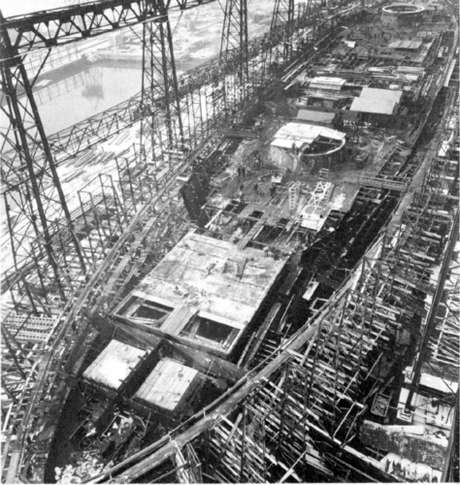 |
| Battleship USS Massachusetts (BB-59) under construction at the Fore River Shipyard of Quincy, Massachusetts, 16 January 1941. This shows the stern and rear turret. |
Indochina: The French (Admiral Decoux) send light cruiser Lamotte Picquet, escorted by sloops Amiral Charner, Dumont D'Urville, Tahure, and Marne, as Task Force 7 from their base in Saigon. Their mission is to confront the Thai forces aiming to take possession of portions of the Mekong Delta which they claim the French stole from them in the late 19th Century. The Thai land army is much larger than the French forces, but the French naval forces are superior to anything that the Thais have. The Thai air force has over 140 aircraft, including Mitsubishi Ki-30s.
The French ships are heading for Koh Chang, southeast of Bangkok, one of the largest Thai islands in the Gulf of Thailand. They have the assistance of reconnaissance flying boat Loire 130, which locates the Thai ships. The objective is to wipe out the defending Thai fleet and bombard the country's coastal cities to force the Thai government to come to terms.
On land, the outnumbered French forces counterattack at the villages of Yang Dang Khum and Phum Preav in Cambodia in the Sisophon sector. The French Foreign Legion provides valuable covering fire which keeps the Thai tanks at bay. The French do not retain their gains but instead, fall back to more defensible positions. This may be considered a tactical victory but a strategic defeat, as the Thais continue their advance. The main problem for the French is that they don't have any military intelligence on the Thais and thus must be overly cautious.
British Homefront: Defeated Republican Presidential candidate Wendell Wilkie arrives in England, his ship passing that of the new British ambassador to the US Lord Halifax.
Future History: Actress Claire Gordon is born in Cambridge, England. Claire Gordon goes on to become an acclaimed film actress and model. She enters history in a 1966 West End production of The Three Musketeers, produced by her husband-to-be William Donaldson. The reason? She becomes the first British actress to appear completely naked on stage in the bath scene. Heck, it's an important first in the theatre and otherwise, she might be forgotten. Claire Gordon passes away on 13 April 2015.
 |
| The key part is soaking the shirt in cold water. |
January 1941
January 1, 1941: Muselier ArrestedJanuary 2, 1941: Camp CategoriesJanuary 3, 1941: Liberty ShipsJanuary 4, 1941: Aussies Take BardiaJanuary 5, 1941: Amy Johnson PerishesJanuary 6, 1941: Four FreedomsJanuary 7, 1941: Pearl Harbor PlansJanuary 8, 1941: Billions For DefenseJanuary 9, 1941: LancastersJanuary 10, 1941: Malta Convoy DevastationJanuary 11, 1941: Murzuk RaidJanuary 12, 1941: Operation RhubarbJanuary 13, 1941: Plymouth BlitzedJanuary 14, 1941: V for VictoryJanuary 15, 1941: Haile Selassie ReturnsJanuary 16, 1941: Illustrious BlitzJanuary 17, 1941: Koh Chang BattleJanuary 18, 1941: Luftwaffe Pounds MaltaJanuary 19, 1941: East African Campaign BeginsJanuary 20, 1941: Roosevelt 3rd TermJanuary 21, 1941: Attack on TobrukJanuary 22, 1941: Tobruk FallsJanuary 23, 1941: Pogrom in BucharestJanuary 24, 1941: Tank Battle in LibyaJanuary 25, 1941: Panjiayu TragedyJanuary 26, 1941: Churchill Working HardJanuary 27, 1941: Grew's WarningJanuary 28, 1941: Ho Chi Minh ReturnsJanuary 29, 1941: US Military Parley With Great BritainJanuary 30, 1941: Derna TakenJanuary 31, 1941: LRDG Battered2020



